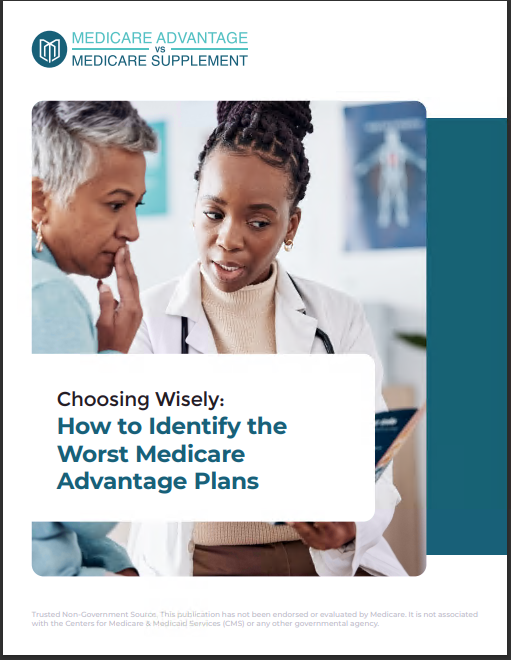Key Takeaways
-
Your Medicare premiums aren’t just set in stone—several factors influence how much you’ll pay, including income, timing, and even where you live.
-
Understanding these cost drivers can help you make informed decisions and potentially lower your expenses.
The Truth About Medicare Costs: Why Your Premiums Might Be Higher Than Expected
When it comes to Medicare, most people expect a clear-cut answer about how much they’ll pay each month. But the reality is far more complex. Medicare premiums aren’t the same for everyone, and you might be surprised at what actually influences your costs. From income adjustments to late penalties, understanding these factors can save you from unnecessary expenses. Let’s break it all down so you can avoid unexpected surprises.
1. Your Income Could Push Your Premiums Higher
Medicare premiums aren’t one-size-fits-all. The more you earn, the more you might pay. Medicare uses a system called Income-Related Monthly Adjustment Amounts (IRMAA) to determine higher premiums for those with greater incomes.
-
How It Works: If your modified adjusted gross income (MAGI) surpasses a certain threshold, you’ll pay more for Medicare Part B and Part D. In 2025, the income threshold for IRMAA starts at $106,000 for individuals and $212,000 for couples filing jointly.
-
What You Can Do: Your premiums are based on tax returns from two years prior, meaning 2023 income affects 2025 costs. If you experience a major life event (like retirement), you can request an IRMAA reduction.
This means that if you had a high income two years ago but are now retired with lower earnings, you could be overpaying for Medicare. It’s crucial to check if you qualify for an adjustment.
2. Late Enrollment Can Cost You More
If you delay enrolling in Medicare when you’re first eligible, you could be hit with penalties that last for life in some cases. There are strict deadlines, and missing them can significantly increase your costs.
-
Medicare Part B Late Enrollment Penalty: If you don’t sign up when first eligible (at age 65) and don’t qualify for an exception, your premium increases by 10% for every 12-month period you were late. And this increase lasts forever.
-
Medicare Part D Late Enrollment Penalty: If you go 63 days or more without creditable prescription drug coverage, you’ll face a penalty added to your monthly Part D premium. This amount is based on 1% of the national base beneficiary premium times the number of uncovered months.
To avoid these penalties, it’s important to enroll on time unless you have creditable coverage through an employer or another source.
3. Where You Live Can Impact Your Costs
Medicare costs can vary depending on your location. While Part A and Part B premiums are standardized nationwide, other costs like Medicare Advantage (Part C) and Part D can be significantly different based on your ZIP code.
-
Regional Differences: Medicare Advantage and Part D plans are private insurance plans regulated at the state level. This means different areas have different costs and coverage options.
-
Medigap (Medicare Supplement) Plans: If you have a Medigap plan, pricing structures vary based on how plans are rated in your state (community-rated, issue-age-rated, or attained-age-rated).
Before choosing coverage, compare what’s available in your area to find the best balance between affordability and benefits.
4. Annual Medicare Changes Could Affect Your Bill
Medicare costs aren’t static. Every year, Medicare updates premiums, deductibles, and out-of-pocket limits, which can affect your total healthcare spending. Understanding these annual changes helps you prepare for potential increases.
Key Medicare Cost Changes in 2025:
-
Part B Premium Increase: The standard premium is now $185 per month, up from 2024.
-
Part A Hospital Deductible: Increased to $1,676 per benefit period.
-
Part D Out-of-Pocket Cap: Beneficiaries now won’t pay more than $2,000 in annual prescription drug costs.
Staying updated on these annual changes ensures you aren’t caught off guard by rising healthcare expenses.
Making Smart Decisions to Control Your Medicare Costs
While some factors affecting Medicare costs are beyond your control, there are ways to reduce what you pay:
1. Adjust Your Income to Avoid IRMAA
If you’re close to an IRMAA threshold, consider strategies to lower your taxable income, such as contributing to a Health Savings Account (HSA) before enrolling in Medicare or withdrawing from Roth accounts instead of traditional IRAs.
2. Enroll on Time
Don’t risk lifelong penalties. Make sure to sign up for Medicare during your Initial Enrollment Period (three months before to three months after your 65th birthday) unless you qualify for an exception.
3. Compare Your Plan Options Every Year
Since costs and benefits change, reviewing your options during Medicare Open Enrollment (October 15 to December 7) ensures you have the best coverage at the most reasonable cost.
4. Consider a Medicare Savings Program (MSP)
If you have a low income, you may qualify for an MSP that helps pay for Part B premiums, deductibles, and coinsurance.
By taking these steps, you can avoid unnecessary expenses and keep your Medicare costs manageable.
Find the Best Medicare Plan for Your Needs
Understanding Medicare costs isn’t always straightforward, but knowing what impacts your premiums can help you plan wisely. Whether it’s avoiding penalties, lowering taxable income, or choosing the right plan, the right strategy can save you money in the long run.
Want to explore your Medicare options further? Get in touch with a licensed agent listed on this website. They can guide you through different plans, ensuring you find the best fit for your healthcare needs and budget.










